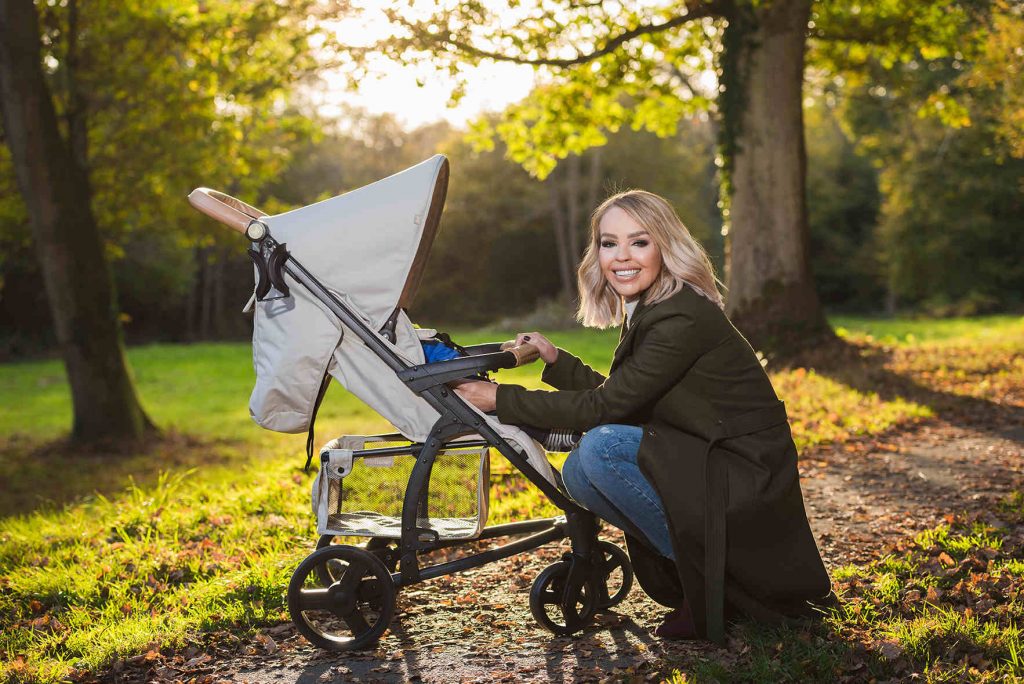Katie Piper Shares How Fitness Improved Her Emotional Wellbeing
Katie Piper Shares How Fitness Improved Her Emotional Wellbeing
Share
Triumph over adversity
A rape victim and acid attack survivor, Katie Piper continues to inspire many with her positivity. This year, she’s set to open a burn and scar rehabilitation centre in Liverpool. Here, she tells BESTFIT how fitness changed her life, and why we should all be a bit braver…
Fitness has become a huge part of your life. How often do you train?
When I’m busy I tend to train two or three times a week, but I like to train up to four or five times if I can. My fitness routine has changed a bit since I became a mother. Before I would do a lot of road running and enter a lot of races for my charity. I’d also do weights at the gym. Now, when I have free time I tend to have my daughter with me, so I’ll train in my kitchen with a personal trainer. I use YouTube videos [for instruction] and I do a lot of HIIT training. I still try and run or cycle when I can.
Have you always been an active person?
When I was younger I trained for vanity reasons, so attempting to look good in clothes. I wanted to be fit and muscly, but that has changed a lot after everything that has happened. I now place a greater emphasis on my health. The stronger and fitter I am the quicker I feel I can bounce back from surgery. I honestly believe that if I wasn’t fit when I had my serious injuries I’m not sure if I would have pulled through the way I did.
You continue to have operations, so does the fitness help you recover mentally?
 Definitely. There’s a whole chapter in my book about fitness being a great mental tool in your toolkit. For me, I’ve never used any kind of anti-depressant or ant-anxiety drugs. Instead, I’ve used fitness as my outlet. I’ve had times of both anxiety and depression and the release I get from the endorphins when exercising is so exhilarating. There’s also an element whereby I feel in control. If I’m seeing results and progression I feel in control of my body. There are some medical things I can’t control or change, so my fitness is something I can control. I’ve never been good at the relaxation side, like yoga or pilates, but I find going out for a road run at 6am on my own a huge stress reliever.
Definitely. There’s a whole chapter in my book about fitness being a great mental tool in your toolkit. For me, I’ve never used any kind of anti-depressant or ant-anxiety drugs. Instead, I’ve used fitness as my outlet. I’ve had times of both anxiety and depression and the release I get from the endorphins when exercising is so exhilarating. There’s also an element whereby I feel in control. If I’m seeing results and progression I feel in control of my body. There are some medical things I can’t control or change, so my fitness is something I can control. I’ve never been good at the relaxation side, like yoga or pilates, but I find going out for a road run at 6am on my own a huge stress reliever.
Going running on your own must be a big thing for you, considering you used to be afraid of going out in the months that followed your attack…
It is great having that physical and mental freedom, and not feeling imprisoned by fear or psychological stuff. Being able to just step out of the door and put your trainers on… it was my goal a few years ago and now I’m living it and doing it; it’s a privilege.
Tell us what your HIIT sessions involve?
I love the fact that it’s convenient, that I can do it in the house. I don’t need equipment to do it. If I’m travelling with work I can do it in my hotel room. It also suits my personality; I love the explosiveness of it. I love burpees, mountain climbers, drips, TRX and star jumps. I do a bit of boxing as well, maybe 20 minutes to end a session where, for example, I’ll do upper cuts to failure, to get my heart going.
You’re in the public eye and photographed a lot in newspapers and magazines, so is there still an element whereby vanity is still a motivation for training, too?
Absolutely and I think it would be unfair to say it wasn’t. It’s fine to want to fit into your clothes and look good. It makes me feel good, and proud. There’s a sense of achievement in that, and that’s fine in moderation. I can’t sit here and say I don’t enjoy having a flat stomach, of course I do, but it’s not the be all and end all. I’m a massive believer in being the best version of you that you can be. So it’s not about training to look like Pamela Anderson, it’s about training to reach your peak.
You post pictures of yourself on Instagram of yourself training and on holiday. That must be liberating because again, in the years that followed your attack, you were very conscious of the way you looked…
I don’t believe in barriers. I think we build our own barriers, and we feed them. The biggest obstacle burn survivors face is losing the inability to sweat. You can’t regulate your body temperature. So, for me, 26 per cent of my body is skin grafted, which is mainly my face, neck, chest and arms. If you see my face when running, it doesn’t sweat at all or even get red. However, my head id dripping wet. If I work out I only wear crop top and shorts because I get so hot. But these barriers are there to be broken. I think the more I’m told I can’t do something, the more determined I am. When I was 24 I was told not to exercise as much, but I couldn’t have that, not at 24. I immediately thought there were ways around it.
How have you developed this positivity?
I try to be a realist. You don’t just come out of a coma or cancer feeling great because that’s just not real life. You go through phases of anger and it’s all about making life choices. Fitness is a life choice. Do you want to be that person on the couch envious of everyone else? Or do you want to go out and do it? Happiness and positivity are available to everyone, and they’re free, if you’re prepared to go and get them. They’re not exclusive or elite. But it takes hard work and discipline. I think my motivation stems from my attack; someone intended to do that to me and I had no control over it. But I do have control over the aftermath and my journey. That’s my choice.
Is having control important to you?
Yes, because I lost control in such a massive way. I lost my eyesight, my ability to swallow food… I felt so helpless for so long, but I’m now at the other end of the scale and everything I can control, I will. That said, I still like to think of myself as a free spirit, and so I don’t want everything in my life to be regimented.
Reading a lot of comments on your social media posts, you’re described as ‘brave’ and ‘inspirational’. Do you feel brave and inspirational?
It’s a nice compliment, but everyone has inner strength and spirit that they can tap into when they need it, even if they’re desperate. Braveness is in everybody.
Your Instagram feed is actually very revealing. You eat well, but have weaknesses!
We don’t have a microwave, so there are no processed foods. I like juices and smoothies. I’m also pescitarian, so I eat a lot of fish, but not much meat. I do like gin and chocolate in moderation, too!
You’re photographed a lot. As someone who had huge issues with the way you looked, how do you now feel about that?
It is a bit weird. You have to try and maintain a positive mental attitude and keep it in perspective.

You’re married and now have a daughter… does it feel like you now have a ‘normal’ life after what happened?
For a while my goals and aspirations weren’t to run marathons and set up a business, like I did, it was to have some normality, and so it’s nice to have that.
Do you still think and talk about the attack? Can you erase something like that from your memory?
It is a struggle. I had severe post-traumatic stress disorder and I have a job where it does get brought up a lot. I talk to a lot of people about their attacks and they quite often compare their situation to mine, and anyone who has experienced mental trauma will know you can never erase it, you just learn to live with it. It’s like a bereavement; you’ll always be sad that that person isn’t there anymore and that the event happened, but you’ll learn how to live a happy and normal life. You’ll never forget it. I still go to therapy now and have dipped in and out ever since it happened.
So you’ve done marathons, what’s next?
I think I’m going to do something with some other acid attack survivors, maybe run a 10k together. Some of them are building their fitness levels, so it’s the perfect distance. And even for me, because I’m doing my HIIT training, I probably couldn’t run as far as I have done previously. I might be open to a triathlon down the line, too. I love a challenge!





















FOLLOW BESTFIT